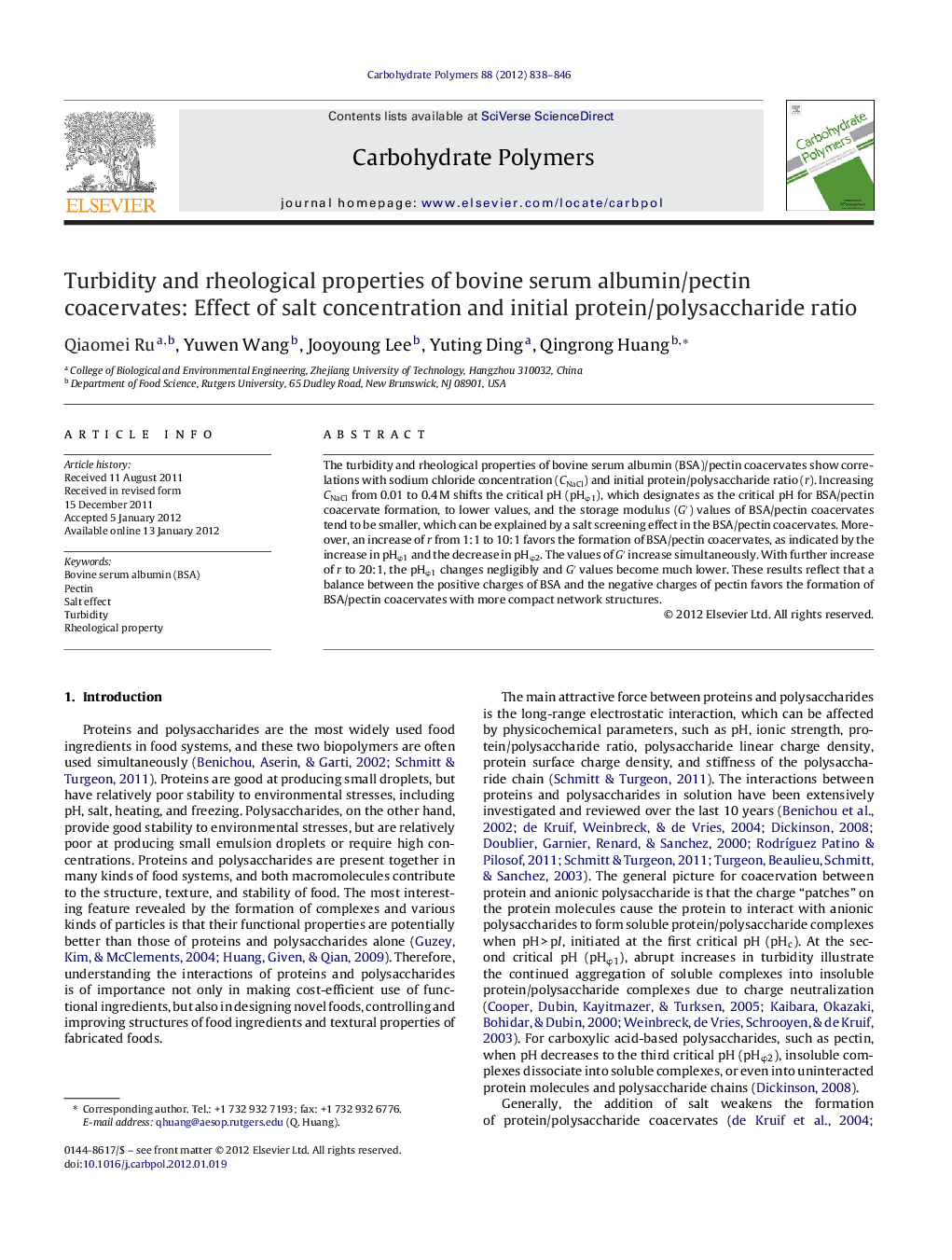| کد مقاله | کد نشریه | سال انتشار | مقاله انگلیسی | نسخه تمام متن |
|---|---|---|---|---|
| 1377265 | 981975 | 2012 | 9 صفحه PDF | دانلود رایگان |

The turbidity and rheological properties of bovine serum albumin (BSA)/pectin coacervates show correlations with sodium chloride concentration (CNaCl) and initial protein/polysaccharide ratio (r). Increasing CNaCl from 0.01 to 0.4 M shifts the critical pH (pHφ1), which designates as the critical pH for BSA/pectin coacervate formation, to lower values, and the storage modulus (G′) values of BSA/pectin coacervates tend to be smaller, which can be explained by a salt screening effect in the BSA/pectin coacervates. Moreover, an increase of r from 1:1 to 10:1 favors the formation of BSA/pectin coacervates, as indicated by the increase in pHφ1 and the decrease in pHφ2. The values of G′ increase simultaneously. With further increase of r to 20:1, the pHφ1 changes negligibly and G′ values become much lower. These results reflect that a balance between the positive charges of BSA and the negative charges of pectin favors the formation of BSA/pectin coacervates with more compact network structures.
► An increase of salt concentration hinders the formation of BSA/pectin coacervates.
► The formation of coacervate networks is favorable as the BSA/pectin ratio up to 10:1.
► Increasing of BSA/pectin ratio to 20:1 reduces the formation of coacervate networks.
Journal: Carbohydrate Polymers - Volume 88, Issue 3, 15 April 2012, Pages 838–846